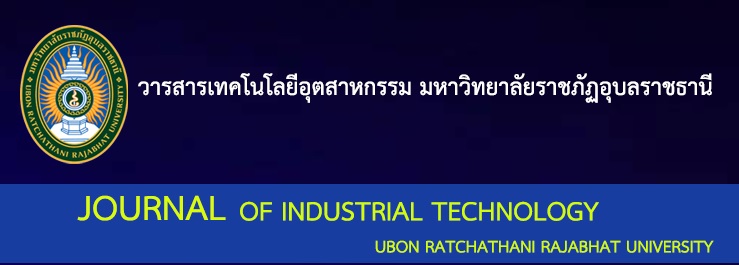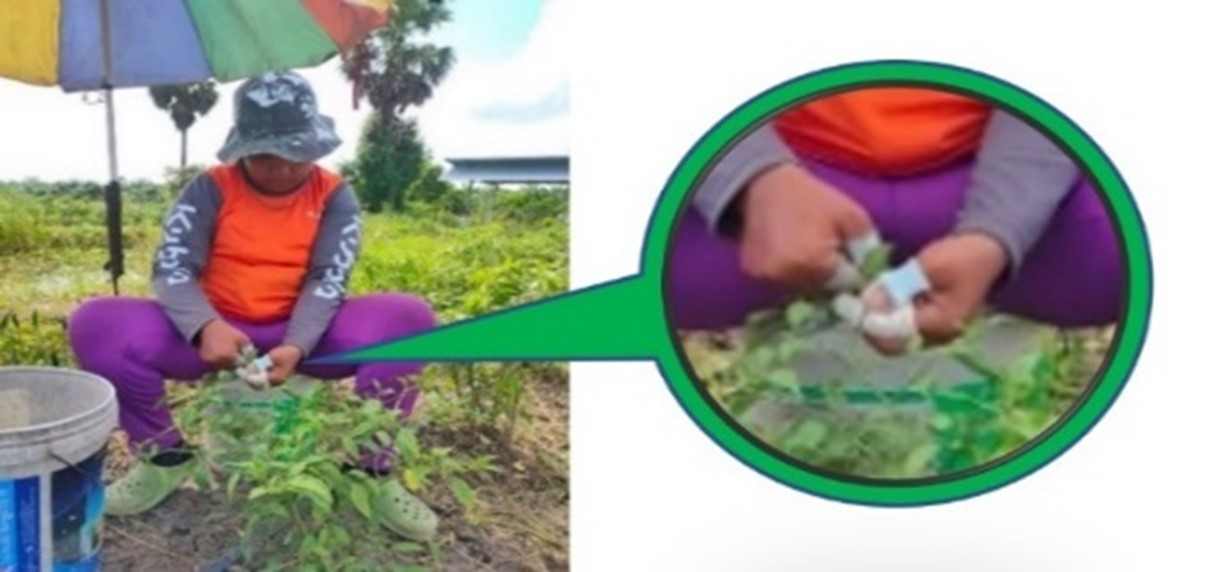Work Improvement by Ergonomics and Development of Chili Harvesting Equipment: A Case Study of a Chili Farmer Group in Hua Sai District, Nakhon Si Thammarat Province
Main Article Content
Abstract
Nowadays, farmers still have problems with inappropriate working postures. The objective of this research was to assess ergonomic risks for work improvement and develop chili harvesting equipment for a chili farmer group in Hua Sai District, Nakhon Si Thammarat Province. The sample group was defined as the total population of 20 persons. The tools used for the research include 1) Rapid Upper Limb Body Posture Assessment (RULA), 2) The satisfaction assessment forms for equipment and injury level, and 3) Materials to create chili harvesting equipment. The results of the study showed that an ergonomic risk assessment by the RULA method was at level 3, which refers to the nature of the work that started having problems and should consider to study further and make improvements as soon as possible. After improvement by giving advice on correct posture and applying equipment, the result of the RULA method was reduced from level 3 to 2, or should there be more studies and ongoing monitoring, it may be necessary to redesign. After developing a device to help harvest chili for farmers to try out, it was found that the average satisfaction with the prototype device was 3.68 points or a very satisfactory level. In addition, chili harvesters were also able to reduce injuries from 2.91 points, or moderate injury to 1.53 points, or mild injury, which was a decrease of 1.38 points, or 47.42%.
Article Details

This work is licensed under a Creative Commons Attribution-NonCommercial-NoDerivatives 4.0 International License.
Articles published in Journal of Industrial Technology Ubon Ratchathani Rajabhat University both hard copy and electronically are belonged to the Journal.
References
C. Pornsuriay and C. Thongrat, “Situation of chili pepper disease in southern Thailand,” Songklanakarin Journal of Plant Science, vol. 5, no. 3, pp. 101-107, Dec, 2018. (in Thai)
L. Jin, Q. Xinyan and Y. Chen, “Design and Analysis on Key Components of a Novel Chili Pepper Harvester’s Picking Device,” The Open Mechanical Engineering Journal, vol. 9, no. 1, pp. 540–545, Sep, 2015.
K. Wachirasiri and S. Taptagaporn, “Work improvement to reduce fatigue and work posture risks: a case study in assembly connectors workers,” Thai Journal of Ergonomics, vol. 1, no. 1, pp. 1-7, Jun, 2017. (in Thai)
W. Madtharak, “Working loss reduction of para rubber plantation farmers using ergonomics assessment: a case study in Manung district, Satun province area,” The Journal of Industrial Technology, vol. 14, no. 1, pp. 13-21, Apr, 2018. (in Thai)
A. Manothum and S. Arphorn, “Study of ergonomic risks of maize farmers in Lampang, Thailand,” The Journal of Industrial Technology, vol. 14, no. 3, pp. 73-81, Dec, 2018. (in Thai)
P. G. Dempsey R. W. McGorry and N. V. O’Brien, “The effects of work height, work piece orientation, gender, and screwdriver type on productivity and wrist deviation,” International Journal of Industrial Ergonomics, vol. 33, no. 4, pp. 339-346, Apr, 2004.
R. Joomjee, C. Theppitak and S. Punneng, “Ergonomics management for lifting and moving rubber sacks at Maung Ubon Ratchathani rubber marketing cooperative,” Journal of Industrial Technology Ubon Ratchathani Rajabhat University, vol. 10, no. 2, pp. 25-36, Dec, 2020. (in Thai)
Ergonomics in Thailand. “Ergonomics assessment.” Thai-ergonomics. Accessed: Jan. 15, 2021. [Online.] Available: http://thai-ergonomic-assessment.blogspot.com/ (in Thai)
L. McAtamney and E. N. Corlett, “RULA: a survey method for the investigation of work-related upper limb disorders,” Applied Ergonomics, vol. 24, no. 2, pp. 91-99, Apr, 1993.
Sungkhapong and K. Pochana, Ergonomics and assessment, 1st ed. SongKla, Thailand: Prince of Songkla University, 2013. (in Thai)
Y. Sermsuti-anuwat, Tool Engineering Basics: Jig, Fixture & Gauge Design, Nonthaburi, Thailand: 21Century, 2013. (in Thai)
Working Group on Ergonomics Risk Assessment Standards, Ergonomics standard on risk assessment of static working postures, Bangkok, Thailand: Thailand Institute of Occupational Safety and Health, 2021. (in Thai)

